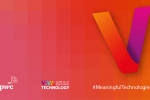Is the Aerospace & Defense (A&D) sector's future on the line because of a generational workforce crisis?
The A&D sector is undergoing significant transformations, driven by technological disruption, market volatility, and geopolitical uncertainty. Compounding these challenges is a critical generational gap, driven by widespread retirements. This gap threatens the industry's ability to address pressing concerns, such as supply chain security, industrial ramp-up and AI integration.
What we’ve observed: a sector facing a demographic cliff
The A&D sector, mirroring broader industrial trends, is experiencing an aging workforce. A substantial portion of highly skilled professionals are nearing retirement, leading to an unprecedented departure of experienced leaders and experts across all levels, from senior management to critical frontline roles. This isn't just a matter of numbers; it signifies a serious loss of vital, often unwritten knowledge, crucial for the sector's operational excellence and future success.
Consider, for instance, the intricate nature of naval shipbuilding, where some programs (end-to-end) can span 80 years: the expertise required to manage and execute such long-term, complex projects is built over decades, not years. Similarly, in aerospace engineering, the development and certification of new aircraft can take 15-20 years, demanding a deep understanding of legacy systems and evolving technologies. In highly regulated areas like aviation, it can take 5-7 years or more to fully train and certify a skilled aircraft mechanic or avionics technician. In defense electronics, the lifecycle of sophisticated systems often exceeds 30 years, requiring specialized knowledge that is not easily replicated.
These extended timelines mean that the loss of experienced professionals can create critical knowledge gaps that are difficult, if not impossible, to fill quickly. The time required to develop a seasoned expert in these fields is substantial, and the rapid departure of these individuals threatens the continuity and success of vital projects.
New executives are being placed in charge of highly complex, long-term projects with limited prior experience. The absence of effective knowledge transfer mechanisms and limited overlap between retiring and incoming leaders amplifies the risk of strategic miscalculations and operational inefficiencies.
Simultaneously, the rapid retirement of experienced production managers, technicians and operators creates a significant skills shortage, impacting production and quality. This is further exacerbated by difficulties in attracting and retaining at all levels due to demanding conditions, limited career growth and competitive pay elsewhere. The overall result is a widening skills gap, with retirement rates outpacing the development of replacements, leading to unfilled specialized positions and impacting production output, especially during periods of high demand and technological change.
Key indicators of the A&D's workforce crisis
- Retirement Rates: A&D’s companies report that a significant percentage of their senior engineers and technicians are within 5-10 years of retirement. For example, in the "Hauts-de-France", a highly industrialized region, retirements are projected to exceed 43% for technicians and 36% for engineers and executives by 2030.
- Technological shift: the manufacturing sector is undergoing a major technological shift, with the rise of Industry 4.0, advanced robotics, and AI. This is creating a demand for workers with new skills, and creating a gap between the actual workforce, and the future needs.
- Difficulty attracting young talent: Studies show misperceptions about manufacturing careers among younger generations. A substantial percentage of young engineers and technicians express more interest in sectors like technology and software than traditional manufacturing or defense. This is especially true with the new digital native generations.
Consequently, these converging challenges are directly contributing to a dramatic surge in vacant positions, with job openings in the A&D industry doubling within just three years.
Building a resilient ecosystem within A&D organizations
To effectively address the critical challenges outlined for the A&D sector, PwC proposes several actionable strategies:
Develop strategic workforce planning
Begin with detailed workforce analysis to identify key roles and anticipate retirements across all levels, from skilled operators to senior experts. Conduct gap analyses to assess the impact of future transformations on existing roles and skills. Utilize AI-driven assessments to pinpoint high-potential employees and create predictive models for critical roles and skills, anticipating future transformations. Establish cross-functional talent review committees to oversee talent pipelines and develop personalized development plans for all workforce segments, ensuring a robust talent ecosystem. Develop proactive strategies to cover gaps through targeted upskilling, strategic recruitment, and internal mobility programs.
This ensures a reliable talent pipeline, minimizing disruption and achieving strategic goals.
Strengthen strategic talent management, upskilling and reskilling
Develop A&D-focused learning academies that offer tailored programs to enhance technical and strategic skills for all workforce roles, addressing sector-specific challenges. Invest in VR and AR training simulations to replicate realistic, high-pressure, and technical scenarios, providing immersive learning experiences for diverse skill sets. Implement talent analytics dashboards for real-time data on employee performance, skill development, and career progression, fostering regular 360° feedback and personalized learning paths.
This builds a skilled and adaptable workforce, ready to tackle complex challenges and drive innovation, boosting competitive advantage.
Implement structured knowledge transfer
To preserve critical expertise, implement robust mentorship and knowledge-sharing programs that match experienced employees (operators, technicians, experts) with high-potential successors across all levels. Conduct knowledge-capture sessions with retiring employees, documenting tacit knowledge and best practices, and create a dynamic digital knowledge platform for easy access to expertise. Integrate knowledge transfer into performance evaluations and reviews, recognizing and rewarding contributions to knowledge sharing and skill development.
This preserves crucial knowledge, prevents loss, and maintains operational efficiency across all workforce segments.
Foster a culture of continuous learning, digital agility and peer co-development
Offer targeted learning opportunities through online and in person courses, workshops, and industry events. Provide digital upskilling and reskilling programs, ensuring all employees are equipped with the necessary digital literacy and technical skills. Encourage innovation through labs or dedicated time for hands-on experimentation with new technologies. Implement strategic job rotations and cross-functional projects to broaden perspectives and enhance collaboration. Introduce peer co-development programs, facilitating knowledge exchange and problem-solving through structured peer-to-peer learning sessions, promoting collaborative growth and shared expertise.
This cultivates an adaptable, future-ready workforce that drives innovation and digital transformation, while also promoting a culture of collaborative learning.
Investing in a holistic workforce strategy and cultivating an adaptable and resilient workforce will enable A&D organizations to not only navigate the generational transition but also secure their long-term success.
Sources: On the Horizon AIA PwC Spring 24 Workforce-Study, Hopes & Fears 2024, Headhunting Factor, DARES











